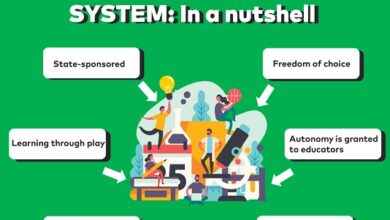What is Observational learning definition phases and uses
Observational learning
Such relevant and famous authors as Burrhus F. Skinner, Julian B. Rotter and, above all, Albert Bandura contributed to the description of the process by which observational learning takes place, through which we learn by seeing how other people behave.
In this article, we will describe what observational learning is based on the work of Bandura , whose contributions in this regard are better known as “social learning theory”. We will also talk about the four stages that make up this process: attention, retention, reproduction and motivation.
Concept of observational learning
The concept of “observational learning” is somewhat ambiguous. Many authors identify it with the social learning described by Albert Bandura; This term is probably the most popular way of referring to this process in the scientific literature.
In turn, both the definition of social and observational learning are confused with other close people, particularly indirect learning, imitation and modeling. However, it is possible to find differential nuances between the original scope of each of the terms, although with time the different conceptions have been homogenized.
In this sense, we can include in observational learning any type of learning that occurs as a result of contemplating the behavior of other living beings (since it is not a specific term for human beings), as well as the consequences of these, that is, of their contingency with the appearance of reinforcements and punishments.
The main particularity of observational learning is that it occurs without the need for the person learning to obtain reinforcement : in this case, information is obtained about the possible effects that a given behavior will have. However, reinforcement is required for the behavior to be carried out, as we will see a little later.
As for the rest of the terms we mentioned, each of them highlights a specific feature of a broad and shared phenomenon. Thus, when we speak of “modeling”, we emphasize the importance of who acts as a behavioral model, while “social learning” refers to their inclusion in the framework of socialization.
Bandura’s social learning theory
In the 1960s, Canadian psychologist Albert Bandura carried out different studies to analyze learning processes that could not be explained by traditional behavioral models (classical and operant conditioning), but required the use of social variables. From them, he formulated his theory of social learning.
Earlier authors, such as BF Skinner or JB Rotter , proposed models that tried to explain observational learning, or other closely related concepts, through basic mechanisms such as reinforcement. However, the “cognitive revolution” contributed to the inclusion of unobservable variables in scientific psychology.
According to Bandura, one of the biggest weaknesses of the existing approaches at the time was the fact that they did not include social variables in the assumptions about the acquisition of behaviors. His theory is based on the idea that learning is a fundamentally cognitive process that is inseparable from the social structure in which it develops.
In this way, Bandura proposed the concept of reciprocal determinism, according to which, when a living being performs learning, it is not being a simple receiver of the events that happen in its environment, but that there is a mutual influence between the context, the behaviors and cognitive variables such as expectations or motivation.
One of the most relevant contributions of Bandura’s work was that he showed that learning can occur without the learner’s need for reinforcement. However, of course, observing that the model gets rewards or punishments as a result of its behavior modulates the learning that takes place.
The 4 stages of this process
Albert Bandura conceptualized observational (or social) learning as a process composed of four steps that occur one after the other . Thus, this type of learning ranges from attention to events that happen in our environment to the motivation that leads us to perform the behavior after learning it by observation.
1. Attention
Attention is the cognitive function that allows us to perceive and understand the events that occur around us . If the person’s cognitive abilities are adequate and sufficient attentional resources are devoted to observation, it will be learned more easily. Certain characteristics of the model, such as its prestige, have a significant influence on this process.
2. Retention
This stage of observational learning refers to memorizing observed behavior. According to Bandura, retention can be based on verbal and visual material, with cognitive cognitive models being more suitable for complex learning in general.
3. Reproduction
Following Bandura’s definition, we understand “reproduction” as the execution of the behavior that had been memorized; We can conceptualize this process as the creation of an action scheme . The feedback we receive from others significantly modulates specific features of behavioral reproduction.
4. Motivation
Although we have perfectly learned a behavior, we are very unlikely to perform it if we don’t have incentives to do so. Thus, the performance of the behavior depends mainly on the expectation of reinforcement ; it is in this stage that, according to Bandura’s theory, the presence of a reinforcer is fundamental, and not in the previous stages.
